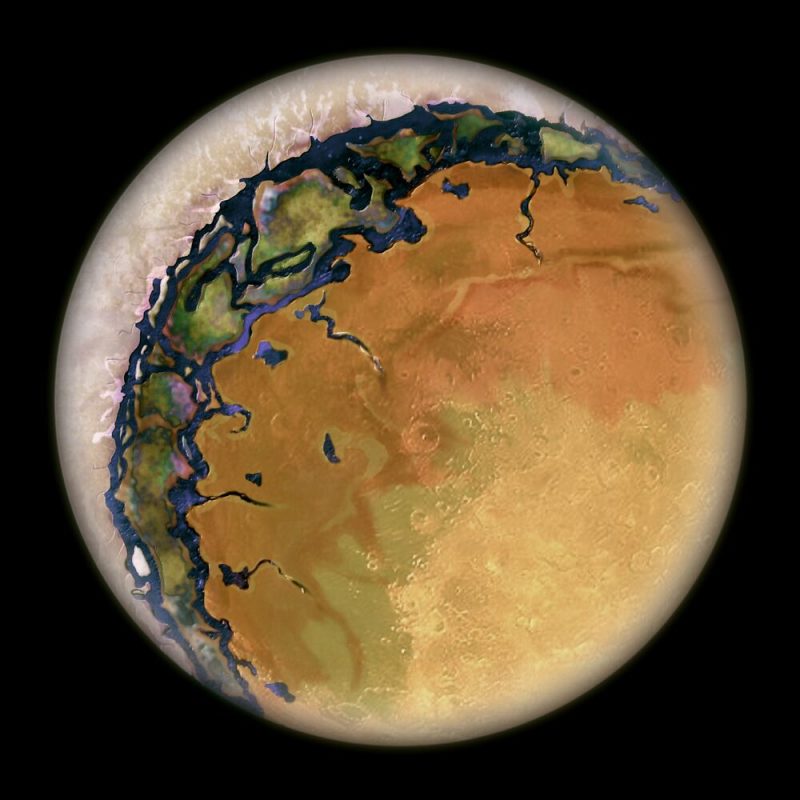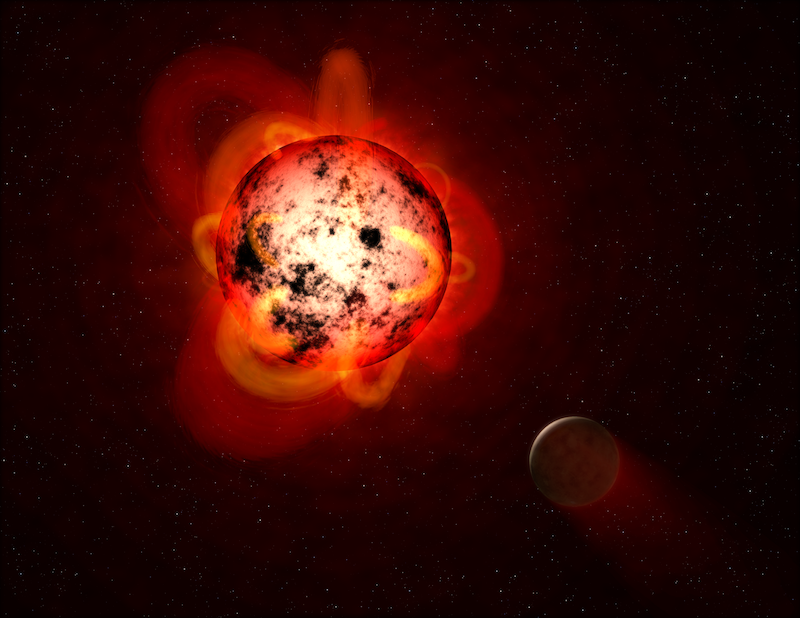
We know that some exoplanets must orbit their stars in such a way that they have permanent day sides and permanent night sides. Such worlds would be searingly hot on their day sides, and brutally cold on their night sides … too hot and too cold for life as we know it to exist. But this month (March 2023), a new study from the University of California, Irvine, suggested an intriguing possibility. These scientists said that, on worlds with permanent day and night, life might exist in the terminator zone, or zone that divides day from night.
The researchers published their peer-reviewed study in The Astrophysical Journal on March 16, 2023.
Last chance to get a moon phase calendar! Only a few left. On sale now.
Exoplanet terminator zones
Consider that, in our own solar system, the innermost planet Mercury once was thought to be permanently locked to our sun, so that it had a permanent day and night side. Scientists speculated that Mercury, too, might have life in its terminator zone. It wasn’t until 1965 that radar observations of Mercury showed that couldn’t be so. Now we know that Mercury rotates on its axis three times for every two revolutions around the sun. Hence, it has no permanent day and night sides.
But – of the 5,000 known exoplanets known beyond our solar system so far – some planets do what Mercury once was thought to do. They orbit their stars in such a way as to have one side always in daylight, and one side always in night. The lead author of the new study – Ana Lobo – said in a statement:
These planets have a permanent day side and a permanent night side.
And, it turns out, tidally-locked planets such as these are thought to be common around the most common sort of star in our galaxy, red dwarf stars. So if life-supporting terminator zones do exist, they could significantly increase the prospects for life in our Milky Way galaxy. Lobo added:
By exploring these exotic climate states, we increase our chances of finding and properly identifying a habitable planet in the near future.
Too hot, too cold and just right
Lobo continued:
This [would be] a planet where the dayside can be scorching hot, well beyond habitability, and the night side is going to be freezing, potentially covered in ice. You could have large glaciers on the night side.
The terminator zone, on the other hand, might be just right for life. A habitable climate might be possible. And because the day and night sides are permanent, the habitable terminator zone would be permanent as well.
Astronomers previously considered the “eye” of a tidally-locked planet – the region in the middle of the side facing the star – to perhaps be the best region for potential habitability. But now, scientists are looking more at the terminator zone, as the paper explained:
Previous studies have focused on scenarios where fractional habitability is confined to the substellar or ‘eye’ region. But in this paper we explore the possibility of planets with terminator habitability, defined by the existence of a habitable band at the transition between a scorching dayside and a glacial nightside.
Modeling the terminator zone
How did the researchers determine that these terminator zones might be habitable? They used the same software as that used to model climate on Earth. For this study, they tweaked the software to adjust for differences in tidally-locked planets, such as a slower rotation rate.
The other main difference is that these planets are not thought to be covered by oceans. Previously, researchers also focused on more water-rich worlds to seek evidence of habitability. Lobo said:
We are trying to draw attention to more water-limited planets, which despite not having widespread oceans, could have lakes or other smaller bodies of liquid water, and these climates could actually be very promising.

How much water in a terminator zone?
Which terminator zone planets are the best for retaining bodies of water? It depends how much water a planet has in the beginning. Some exoplanets are likely to have global oceans, scientists say. But what happens if a planet starts out covered by water, but is tidally-locked? The models show that the water on the side of the planet facing its star would eventually evaporate. So it could blanket the entire planet in a thick layer of water vapor.
But, if a planet is mostly dry land to begin with, then that scenario wouldn’t happen. So most of the water might be retained in the terminator zone itself, perhaps as lakes. Aomawa Shields, associate professor of physics and astronomy at University of California, Irvine, added:
Ana has shown if there’s a lot of land on the planet, the scenario we call ‘terminator habitability’ can exist a lot more easily.
These new and exotic habitability states our team is uncovering are no longer the stuff of science fiction.
Bottom line: A new study shows that exoplanet terminator zones – regions on worlds with permanent day and night sides – might be able to support life.
Source: Terminator Habitability: The Case for Limited Water Availability on M-dwarf Planets











